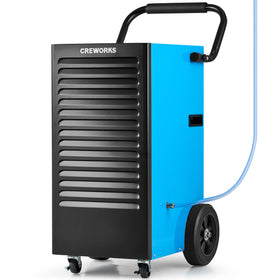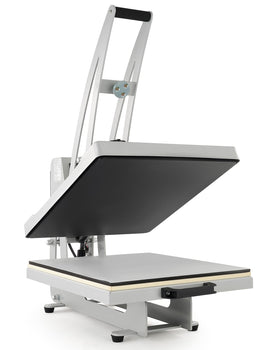With over 10000+ orders
With over 10000+ orders
Ultrasonic cleaning is one of the most effective methods you can use to restore the shine to your brass items.
However, not all brass is the same, and an ultrasonic cleaner can be delicate to use. So, if you are cleaning brass items in your ultrasonic cleaner, the process has to differ a little depending on the size and nature of the items. Let’s break it down.

Cleaning brass in an ultrasonic cleaner does not is not very different from cleaning other materials like metals or even rubber.
The only difference with cleaning brass in an ultrasonic cleaner is that you need to know the right ultrasonic cleaning solution to use, set the ultrasonic to the right temperature, and remember to rinse the items immediately after the cleaning is done.
Here is the overall process of cleaning brass in an ultrasonic cleaner, including all the key steps to make sure your brass items come out sparkling without damage:
The first step for cleaning brass in an ultrasonic cleaner is to ensure you have the right ultrasonic cleaning solution. Depending on the intensity of the cleaning needed, you can choose between two options:
Keep in mind, though, that while the DIY solution works great for light corrosion, it may not be as effective if your brass items are significantly or heavily corroded. Also, avoid ammonia or harsh acids unless you’re experienced, because they can damage the metal.
Once you have the right solution, the next step is to ensure that your ultrasonic cleaner is set to the right temperature. For cleaning brass, make sure you keep the ultrasonic cleaner between 120–140°F (50–60°C).
Higher temperatures can accelerate cleaning speed, but may damage delicate pieces or plating.
Another important tip for cleaning brass in an ultrasonic cleaner is to ensure that you time it right. Run cycles for 3–10 minutes, depending on how dirty the brass is, but not more than that.
Also, check your items halfway through to make sure they aren’t over-cleaned or dulled, which is what will happen if the items are in there for too long.
After cleaning, rinse the brass items thoroughly with clean water to remove any remaining solution. Then, proceed to dry immediately with a soft cloth to prevent new oxidation.
If you want a mirror-like shine, follow up with a gentle brass polish or cream.
While the process of cleaning brass in an ultrasonic cleaner is generally the same, not all brass reacts the same way in an ultrasonic cleaner.
So, there are always extra precautions to take depending on what brass items you have in the ultrasonic cleaner. Here’s how the process varies for cleaning brass hardware, brass jewellery, and heavily corroded brass:

When cleaning brass hardware in an ultrasonic cleaner, use a brass-safe cleaning solution (avoid ammonia), keep the temperature around 120–140°F (50–60°C), and limit cleaning time to a few minutes to prevent dulling.
For cleaning brass hardware, a standard countertop ultrasonic cleaner works, but if you are cleaning larger pieces, you can either use a larger ultrasonic cleaner or clean in multiple batches.
This 360W Knob Ultrasonic Cleaner is one of the larger models from Creworks. With a 15L capacity, it has enough space for brass hardware of almost all sizes. It comes with a digital time and 300W heater. You also get gentle degas modes for more effective cleaning.

Brass jewelry can be cleaned in an ultrasonic cleaner, but it needs a gentler approach than hardware or other solid brass items. The process is similar to cleaning other brass, but jewelry needs milder solutions, lower temperatures, and shorter cycles to avoid damage.
Here are some important tips to keep in mind:
For cleaning brass jewellery, a smaller ultrasonic cleaner with a delicate or jewelry setting is ideal. Follow the steps above, and always rinse and pat dry gently to restore shine without risking damage. Consider this 60W Knob Ultrasonic Cleaner from Creworks. It comes with a digital timer and 1a 00W heater for ultrasonic cleaning.
Ultrasonic cleaning alone usually isn’t enough for deep corrosion or pitting. However, if some pre-treatment has already been done, an ultrasonic cleaner can still play an important part when it comes to cleaning heavily corroded brass. Here’s why and how to approach it safely:
| Method | Effectiveness | Safety / Risks | Best For / Notes |
| Manual polishing/cream | Good for light tarnish and fingerprints; restores shine | Very safe; can scratch if abrasive cloth is used | Jewelry, hardware, decorative pieces; gentle control over polishing |
| Soaking in mild acid (vinegar, lemon juice, citric acid) | Effective for moderate tarnish and light corrosion | Strong acid can damage the surface or plating if over-soaked | Small to medium pieces; pre-treatment before polishing |
| Abrasive scrubbing (brush, sandpaper, steel wool) | Excellent for heavy corrosion or pitting | Can scratch or remove plating; labor-intensive | Industrial hardware, pitted or extremely tarnished items |
| Ultrasonic cleaning | Excellent for dirt in crevices and intricate designs; restores shine for light to moderate tarnish | Can damage delicate plating, glued stones, or fragile jewelry if cycles are too long | Hardware, jewelry, decorative pieces with detail; best after pre-treatment for heavy corrosion |
| Electrolytic/chemical bath (professional restoration) | Superior for heavy corrosion, pitting, and antiques | Requires expertise; can be expensive | Antique or severely corroded brass; professional restoration recommended |
Ultrasonic cleaning stands out because it:
However:

Yes, you can clean brass in an ultrasonic cleaner -and for many items, it’s the easiest and most thorough way to restore shine, especially for intricate or hard-to-reach surfaces.
The key is understanding what kind of brass you have, how corroded it is, and choosing the right cleaning solution, temperature, and cycle length.
For heavily corroded pieces or antiques, combine manual or chemical pre-treatment with ultrasonic cleaning, or consider professional restoration.
With the right approach, your brass (whether it’s hardware, jewelry, or collectible pieces) can look bright and polished again without a ton of elbow grease.
You may also be interested in how to clean old coins without damaging them with an ultrasonic cleaner.












Leave a comment